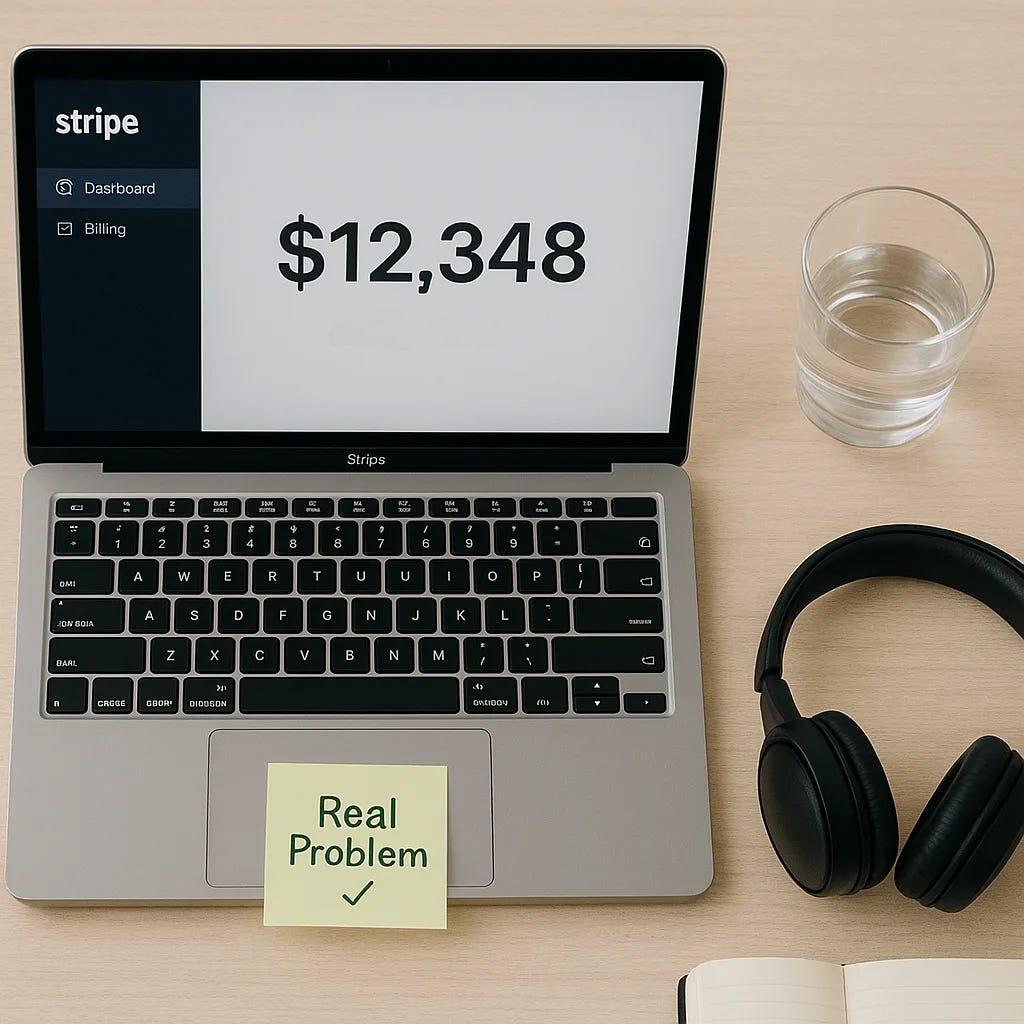Why 99% of Indie Hackers Fail (And How I Finally Broke the Curse)
I built 9 products. Polished. Clever. Dead on arrival. Here's what I learned, and the shift that finally made real money.
99% of indie projects die without making a single dollar.
Not because their creators aren't talented. But because they're solving imaginary problems.
For 600 days, I was that person. I built 9 products with clean code, polished landing pages, and clever solutions.
Each one launched to crickets. Each one died within weeks.
I remember launching one tool. A partners habit tracker (PinkyPartner) after three months of work (Back when there wasn’t AI to do everything for you haha).
Slick animations, mobile-friendly, an amazing onboarding process. Even turned it into a PWA (Web app turned mobile app).
I posted it on Product Hunt, Hacker News, told people on LinkedIn about it and had my family sign up.
Results? Had a few people who signed up to build habits with me. Nobody used it besides that.
Then I decided to do things differently.
Not with another product. Not with another redesign. I started by looking for feedback.
That’s when things started to click and I finally understood the one thing that stopped me from progressing.
Verifying and pivoting.
The Validation Trap Most Builders Fall Into
“Just ship it” is great advice, if you’ve got an audience.
If you don’t? It’s a shortcut to burnout.
We tell ourselves that coding alone is the best way to focus. That we're doing it like the legends did.
Zuck in his dorm, Jobs in the garage.
Every hour you spend coding without validation is a growing risk. You're betting on your own assumptions, not on what users actually want.
Nothing destroys motivation like silence after launch. I’ve been there.
Rapid Validation Without Building Anything
People tend to think that they should be direct and ask their potential customers straight on:
“Would you use this?”
Worst mistake you can make. You’ll probably get a polite “maybe” or a fake “yes”.
Instead, you should ask them the questions that will steer the conversation in the direction you want.
That way you get honest answers.
The goal isn't compliments and self-assurances. It's contradictions that make you understand the space better.
A contradiction means you’re close to the truth.
Start with a simple “hi”. Get to know the person on the other side of the chat, and then ask questions that are related to the problem.
And for the love of god, don’t say you’re building a product.
Pro tip:
When someone says "sounds interesting", you just lost.
That’s pity politeness. You revealed too early, and now they’re being nice because they know it’s your baby.
You don’t want nice. You want truth.
The MLC Approach (Minimal, Lovable, Complete)
MVPs (Minimum Viable Product) are useful, but only when used right.
If you “just ship” a half-baked MVP and expect real traction, you’re setting yourself up for disappointment. Most users will leave with:
“Yeah, I see the potential… but it’s not useful yet.”
Here’s the shift you need:
MVPs should help you discover your MLC
That means:
It solves a real problem.
It doesn’t look like a side project.
People love using it, and tell their friends.
They trust it enough to put in a credit card.
Yes, your first version should look good. Yes, it should feel polished.
And no, you don’t need 50 features.
But you do need trust.
Nobody wants to pay for something that feels broken.
Nobody enjoys trusting their money to a glitchy MVP.
The Only Question You Should Be Asking
“How do I reach the best MLC, as quickly as possible?”
That’s it. That’s the game.
Not "how fast can I ship," not "how lean can I build".
But how quickly can I validate, observe, learn and iterate until people genuinely want what I’m building.
Once you find that? Jackpot.
Interested to find out how you start building your products and grow them to be profitable. Tell me in the comments.
P.S. I am starting a new group of indie hackers who are interested in building products the right way and making serious money, fast.
The group is exclusive and has a limited number of spots.
The catch?
Not everybody can join. I’ll have a 30-minute call with you to figure out if you’re the right fit.
If you’d like to be considered:
Reply to this email
Say “I’m in”
I’ll get you onboarded right away



